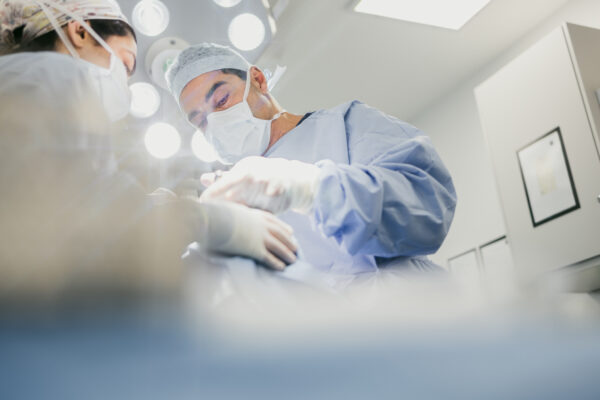

It is estimated that up to 80% of people in the world have a deviated septum. In the UK, approximately 70% of Britons have a deviated septum. To put it into perspective, that means around 47.4 million people in the country suffer from the condition. Therefore, it is no surprise that in 2019, around 16,700 septoplasty procedures were performed in England alone.
But what is a deviated septum, and how is it caused? In short, a deviated septum is when the thin wall inside your nose (called the septum) is off-centre. This matters as the septum divides your nasal passages, and when located in the centre of your nose, it allows air to flow freely through both sides. However, when the septum leans to one side, it narrows one or both nasal passages, leading to breathing difficulties or frequent sinus infections. Sometimes, the deviation is so severe that it can block airflow completely.
As seen from the numbers above, it is quite common. In fact, many people do not even know they have it, but others are well aware of it.
Nasal congestion is one of the most frequent complaints, often affecting one side of the nose and worsening during sleep. Another common symptom of a deviated nasal septum is that it can hinder proper mucus drainage, increasing the risk of sinus infections. According to a study conducted at King Abdulaziz University Hospital, 75.1% of patients had a deviated septum, and 51.3% also had sinusitis, indicating a strong association between the two conditions.
The structural issues caused by a deviated nasal septum can also dry out the nasal passages, making nosebleeds more likely. In addition, the blockage can lead to snoring or even cause obstructive sleep apnea, a condition where breathing briefly stops during sleep.
Of course, a deviated septum can be managed with decongestants, nasal sprays, or allergy medications. So, when is surgery recommended? And that is a great question. Surgery is typically recommended when non-surgical treatments do not provide adequate relief or when the deviation severely affects your ability to breathe and impacts your daily life.
There are also two types of surgery: septoplasty and septorhinoplasty. A septoplasty (septo referring to septum and plasty meaning to form) is a functional surgery that corrects a deviated septum. On the other hand, a septorhinoplasty (literally means surgical reshaping of both the nasal septum and the external nose) has functional and cosmetic aims. It not only corrects the septal deviation but also remodels and improves the external appearance of the nose.
The earliest attempts at nose surgery were in ancient Egypt, where medical writings described straightforward nasal repairs, typically for injuries or disfigurement. During the Renaissance in the 16th century, Italian surgeon Gaspare Tagliacozzi laid the foundations for nasal reconstruction, particularly in facial trauma. His reconstructive surgery work was the foundation for subsequent advancements.
In the 1920s and 1930s, surgeons like Ralph Millard and Eugene G. Cottle refined the technique of nasal surgery. Cottle was especially significant in establishing the science of nasal construction and its impact on breathing.
Today, both septoplasty and septorhinoplasty are highly refined procedures. Advances in minimally invasive techniques, improved imaging, and more precise surgical planning have made these procedures safer and more effective than ever. These procedures are also performed as outpatient procedures, meaning you can go home the same day. The risk of complications is relatively rare as well, with postoperative infection rates ranging from 0.48% to 12%.
Regarding the procedure itself, an incision is made inside the nostrils to access the septum. The deviated sections of the septum are then carefully trimmed, repositioned, or removed, and the septum is realigned to open up the nasal passages. In certain cases, a portion of the septum may require reconstruction to ensure optimal airflow and function. This approach also minimises scarring, often resulting in little to no visible marks.

The main point is that surgery for a deviated septum can significantly improve the lives of those who suffer from chronic nasal congestion, frequent sinus infections, breathing difficulties, or other symptoms caused by a misaligned septum. It offers great efficacy in relieving these issues.
To be more precise, a Swedish National Septoplasty Register study found that 63% of patients had improvement in nasal blockage 12 months after surgery. The result was even more impressive for those with severe obstruction, with 81% reported improvement, compared to 57% with moderate and 31% with mild obstruction.
Another Swedish study found that 76% of patients indicated their symptoms were “almost gone” or “gone” 6 months after the procedure. Therefore, it is clear that by correcting the underlying structural issue, the surgery improves breathing, enhances comfort, and can help profoundly elevate your overall quality of life.

Dr Yannis Alexandrides MD FACS is an expert in facelifts and cosmetic surgery and is the Founder and Medical Director of 111 Harley St.